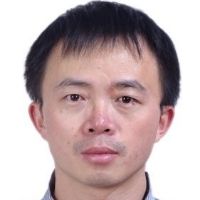Advances in Uranium Metallogenic Theory, Exploration and Exploitation
A special issue of Minerals (ISSN 2075-163X).
Deadline for manuscript submissions: 30 June 2024 | Viewed by 1862
Special Issue Editors
Interests: genesis of endogenic uranium polymetallic deposits
Special Issues, Collections and Topics in MDPI journals
Interests: sedimentology of uranium reservoirs; diagenesis and mineralization of sandstone-hosted uranium deposits
Interests: regional metallogenic dynamics and typical U deposit research on endogenic geological process, including granite-hosted, volcanic related and metamorphic-anatectic related U deposits
Special Issue Information
Dear Colleagues,
Natural uranium resources play an important role in providing green energy in human society for seeking low-carbon development. Many countries have considered nuclear energy as an important direction in future energy strategies. Recently, a series of advances have been achieved in the metallogenic theory, exploration and exploitation of different types of uranium deposits in the world. Therefore, we propose this Special Issue to share these new discoveries. This Special Issue will cover a wide range of related topics of uranium resources, including—but not limited to—the following sections:
Section 1 Advance in metallogenic theory of uranium and uranium polymetallic deposits.
Section 2 New breakthroughs and progress in uranium exploration and exploitation.
Section 3 New technologies and methods related to metallogenic theory, exploration, and exploitation of uranium deposits.
Dr. Shuiyuan Yang
Dr. Hui Rong
Dr. Chunying Guo
Dr. Jincheng Luo
Guest Editors
Manuscript Submission Information
Manuscripts should be submitted online at www.mdpi.com by registering and logging in to this website. Once you are registered, click here to go to the submission form. Manuscripts can be submitted until the deadline. All submissions that pass pre-check are peer-reviewed. Accepted papers will be published continuously in the journal (as soon as accepted) and will be listed together on the special issue website. Research articles, review articles as well as short communications are invited. For planned papers, a title and short abstract (about 100 words) can be sent to the Editorial Office for announcement on this website.
Submitted manuscripts should not have been published previously, nor be under consideration for publication elsewhere (except conference proceedings papers). All manuscripts are thoroughly refereed through a single-blind peer-review process. A guide for authors and other relevant information for submission of manuscripts is available on the Instructions for Authors page. Minerals is an international peer-reviewed open access monthly journal published by MDPI.
Please visit the Instructions for Authors page before submitting a manuscript. The Article Processing Charge (APC) for publication in this open access journal is 2400 CHF (Swiss Francs). Submitted papers should be well formatted and use good English. Authors may use MDPI's English editing service prior to publication or during author revisions.
Keywords
- geology of newly discovered uranium deposits
- genesis of uranium deposits
- uranium mineralization with other mineral resources
- uranium metallogenic dynamics
- structural and/or sedimentary control on uranium deposits
- new methods of uranium exploration using geophysics, geochemistry and remote sensing
- new exploitation methods in uranium resources








